
 Podcasts
PodcastsCatch the latest PR news & updates with PRovoke Media's PR Podcasts. Lifting the lid on key industry stories & trends, join our listeners of PR podcasts today.
 Videos
VideosLatest video interviews and campaigns from PRovoke Media, previously known as the Holmes Report.
Long-form journalism that analyzes the issues, challenges and opportunities facing the business and practice of PR.
 Profiles & Interviews
Profiles & InterviewsExplore PR profiles and interviews with leaders from the marketing and PR worlds.
 Crisis Review
Crisis ReviewPR Crisis & Business Crisis review. PRovoke Media's annual analysis of the top reputation crises to rock the corporate sector. Read on here.
 Coronavirus
CoronavirusPRovoke Media's coverage of the Covid-19 crisis, focusing on corporate communication, public affairs & PR industry fallout.
 Trend Forecasts
Trend ForecastsPRovoke Media's PR Trends round up. PRovoke Media's annual forecast of PR trends and news that will impact the PR world in the year ahead...
 Social & Digital
Social & DigitalDedicated to exploring the new frontiers of PR as it dives deeper into social media, content and analytics.
 Technology
TechnologyOur coverage of key technology PR trends and challenges from around the world of digital communications.
 Consumer
ConsumerFrom brand marketing to conscious consumerism, coverage of key marketing and PR trends worldwide.
 Employee Engagement
Employee EngagementPRovoke Media's coverage, analysis and news around the rapidly-shifting area of employee engagement and internal communications.
 Sports Marketing
Sports Marketing Sports PR news, diversity & inclusion trends, views and analysis from PRovoke Media. Subscribe today for the very latest in the world of sports communications.
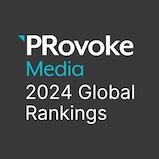 Global PR Agency Rankings
Global PR Agency RankingsPRovoke Media's definitive global benchmark of global PR agency size and growth.
Enter PRovoke Media's 2024 Global 250 Agency Ranking and/or our Agencies of the Year competitions now.
 Agencies of the Year
Agencies of the YearPRovoke Media's annual selections for PR Agencies of the Year, across all of the world's major markets.
 Innovator 25
Innovator 25PRovoke Media profiles marcomms innovators from across North America, EMEA and Asia-Pac.
 Creativity in PR
Creativity in PRIn-depth annual research into the PR industry's efforts to raise creative standards.
 Asia-Pacific Communication Index
Asia-Pacific Communication IndexAPACD/Ruder Finn annual study of Asia-Pacific in-house communications professionals.
 SABRE Awards
SABRE AwardsThe world's biggest PR awards programme, dedicated to benchmarking the best PR work from across the globe.
 PRovokeSummit Global
PRovokeSummit GlobalThe biggest PR conference of the year, a high-level forum designed to address the critical issues that matter most.
 PRovoke Media Regional Series
PRovoke Media Regional SeriesA global network of conferences that explore the innovation and disruption that is redefining public relations.
 Agencies of the Year
Agencies of the YearUnrivalled insight into the world's best PR agencies, across specialist and geographic categories.
 Roundtables
RoundtablesOur Roundtables bring together in-house comms leaders with PR firms to examine the future of communications.
 Agency Playbook
Agency PlaybookThe PR industry’s most comprehensive listing of firms from every region and specialty
.jpg) All Jobs
All JobsFind the latest global PR and communications jobs from PRovoke Media. From internships to account executives or directors. See all our PR jobs here.
PRovoke Media's editorial series published in collaboration with partners.
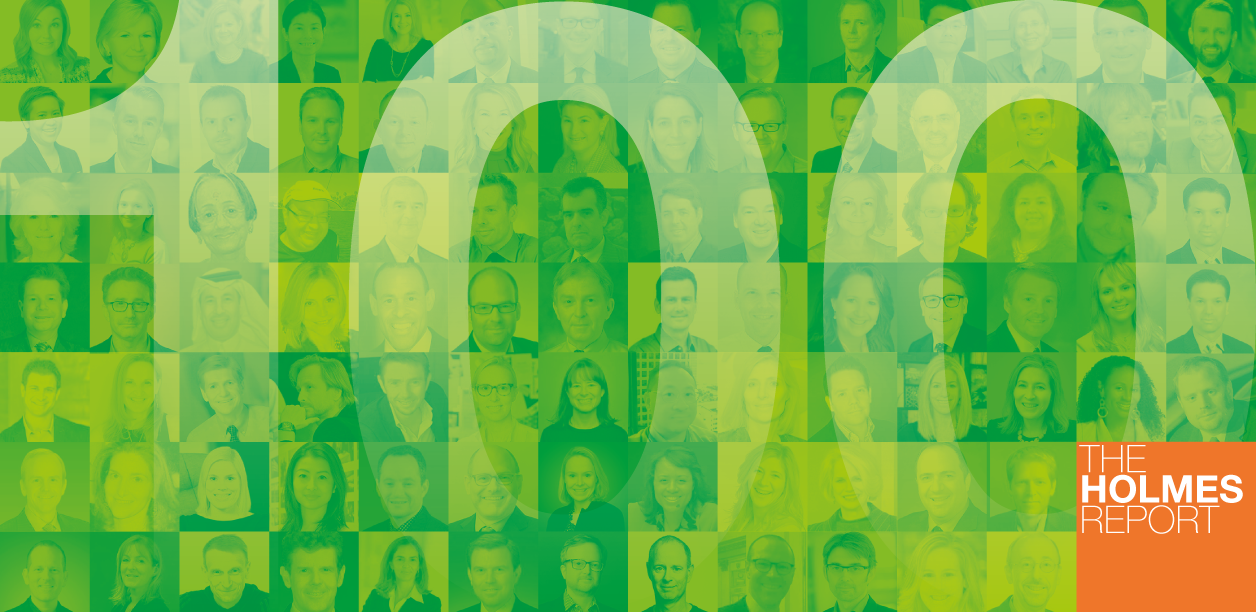
Introduction & Methodology | Profiles | Demographics & Background | Teams, Budgets & Agencies | Future Challenges, Diversity & Inspiration | The Crossover Stars | The Rising Stars | Sponsored Content: Digital Reductionism
The following research is based on responses from a survey sent to this year's Influence 100, and when applicable, our own analysis and research. Because of rounding, some percentages might exceed 100%.
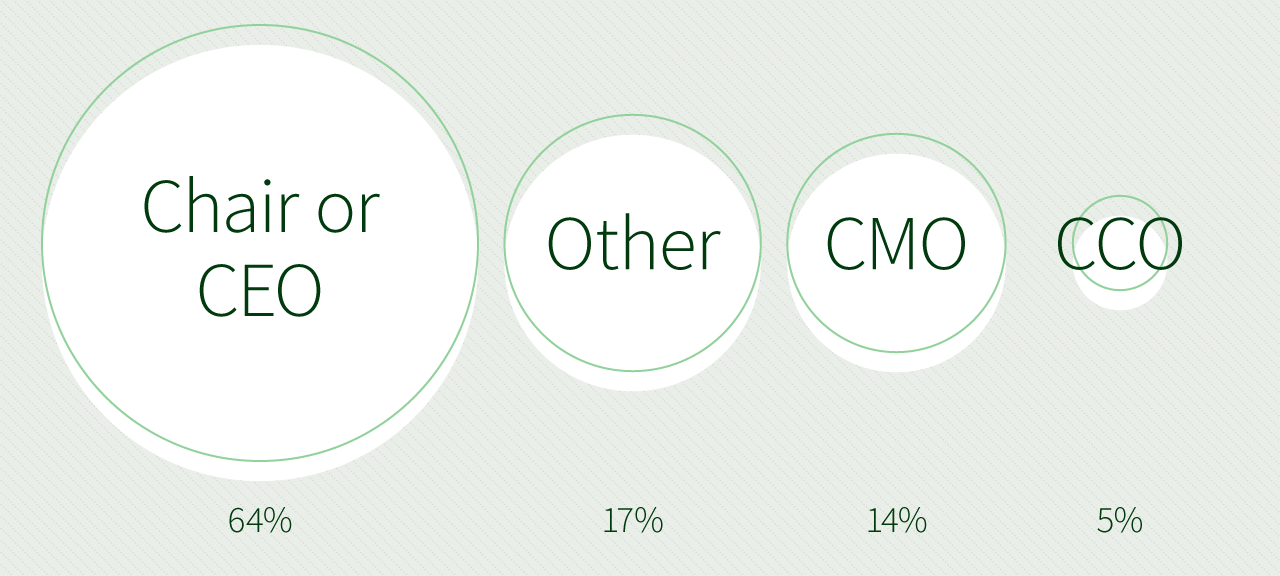 There's a slight dip in the number of respondents reporting into the chief executive or chair this year: 64%, down from 66% in 2017, but up from 60% in 2015. Oversight by the chief marketing officer stayed steady at 14%, with the remaining 22% reporting into various functions including the chief operations officer, HR, legal and heads of sales.
There's a slight dip in the number of respondents reporting into the chief executive or chair this year: 64%, down from 66% in 2017, but up from 60% in 2015. Oversight by the chief marketing officer stayed steady at 14%, with the remaining 22% reporting into various functions including the chief operations officer, HR, legal and heads of sales.
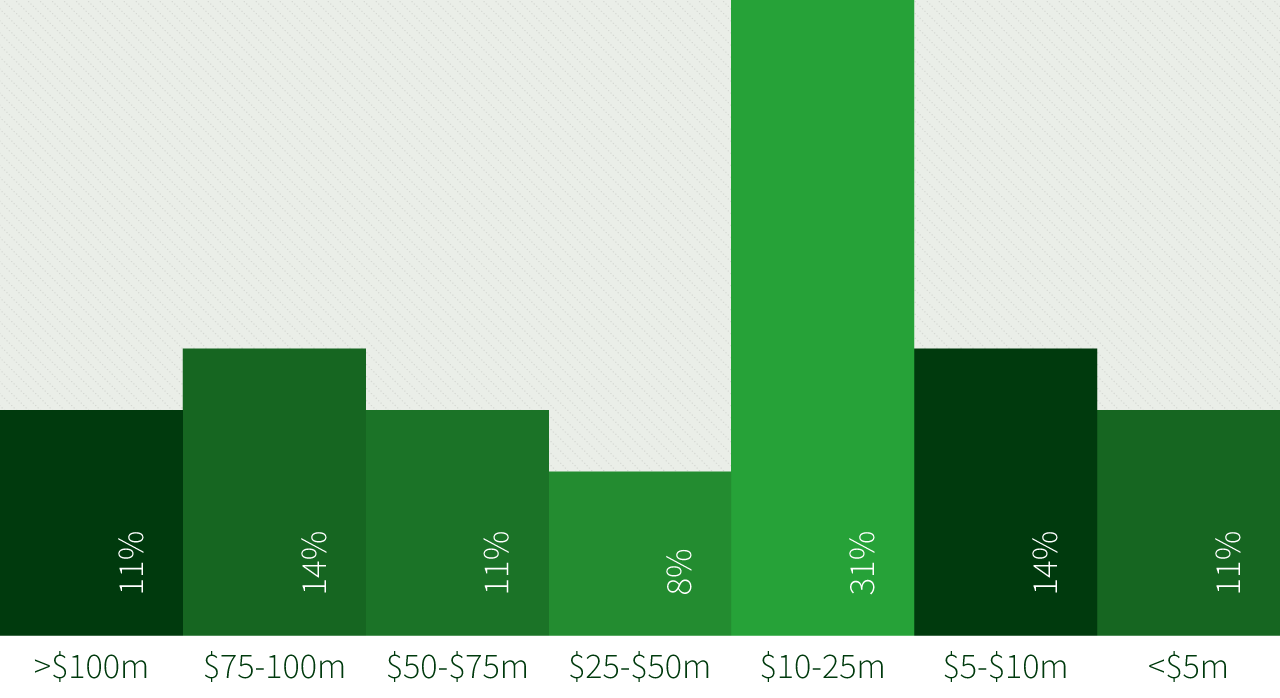

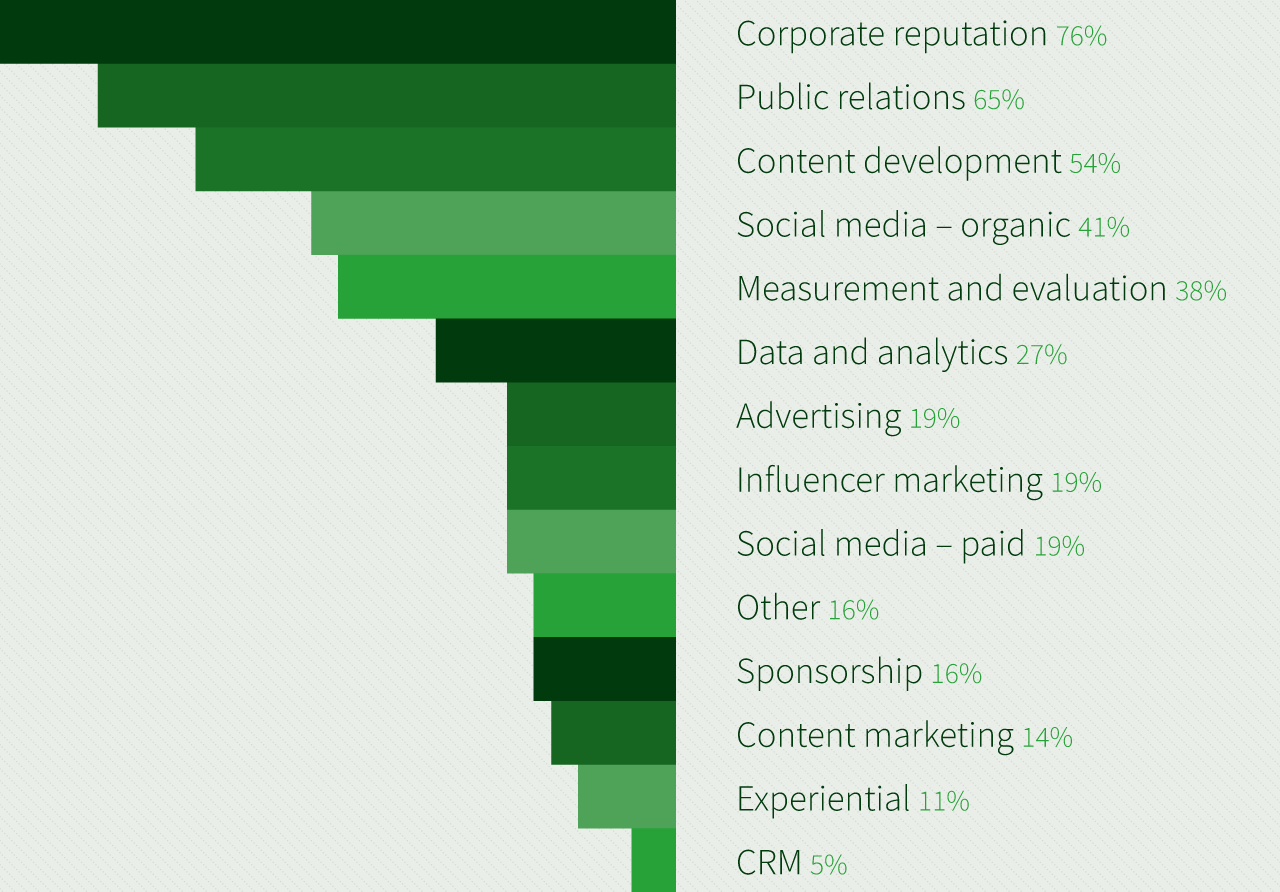 There’s no question that PR budgets have shrunk among our influencers this year, after a temporary spike to 19% last year, the number of executives who oversee PR budgets greater than $100m has continued its freefall. From 50% of our respondents managing budgets of this size in 2014, it’s now down to 11%. Those who peg their budget between $75m and $100m dropped to 14% from 19% last year, but that’s still up from 10% in 2016 and 2015.
There’s no question that PR budgets have shrunk among our influencers this year, after a temporary spike to 19% last year, the number of executives who oversee PR budgets greater than $100m has continued its freefall. From 50% of our respondents managing budgets of this size in 2014, it’s now down to 11%. Those who peg their budget between $75m and $100m dropped to 14% from 19% last year, but that’s still up from 10% in 2016 and 2015. 
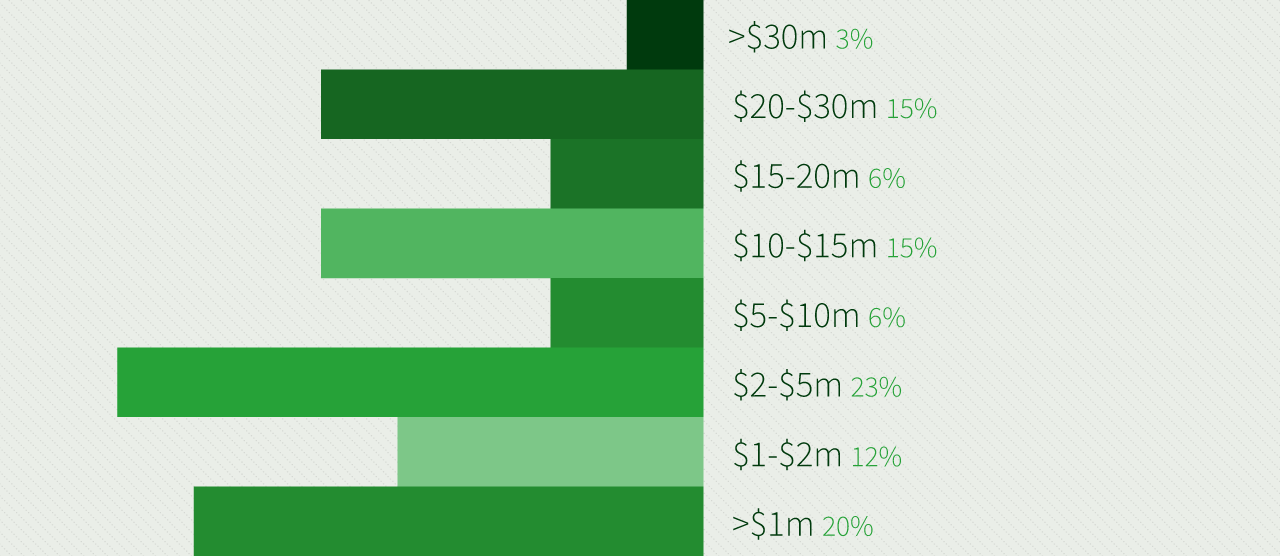
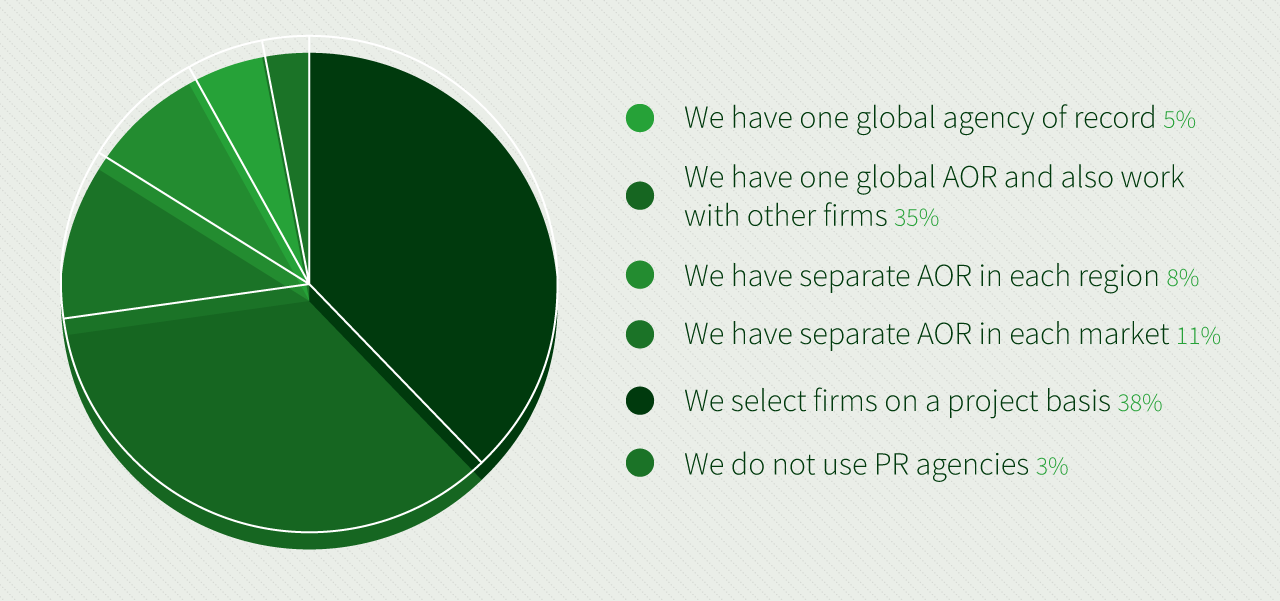 The Influence of our 100 this year again ranges further than public relations in terms of being primary decision makers for hiring agencies beyond PR firms, although to a lesser extent than in 2017. This year, 64% of respondents were the primary decision-maker for digital/social agencies (down significantly from 79% last year) and 28% said the same of advertising agencies, although this was also down sharply from 47% in 2017.
The Influence of our 100 this year again ranges further than public relations in terms of being primary decision makers for hiring agencies beyond PR firms, although to a lesser extent than in 2017. This year, 64% of respondents were the primary decision-maker for digital/social agencies (down significantly from 79% last year) and 28% said the same of advertising agencies, although this was also down sharply from 47% in 2017.

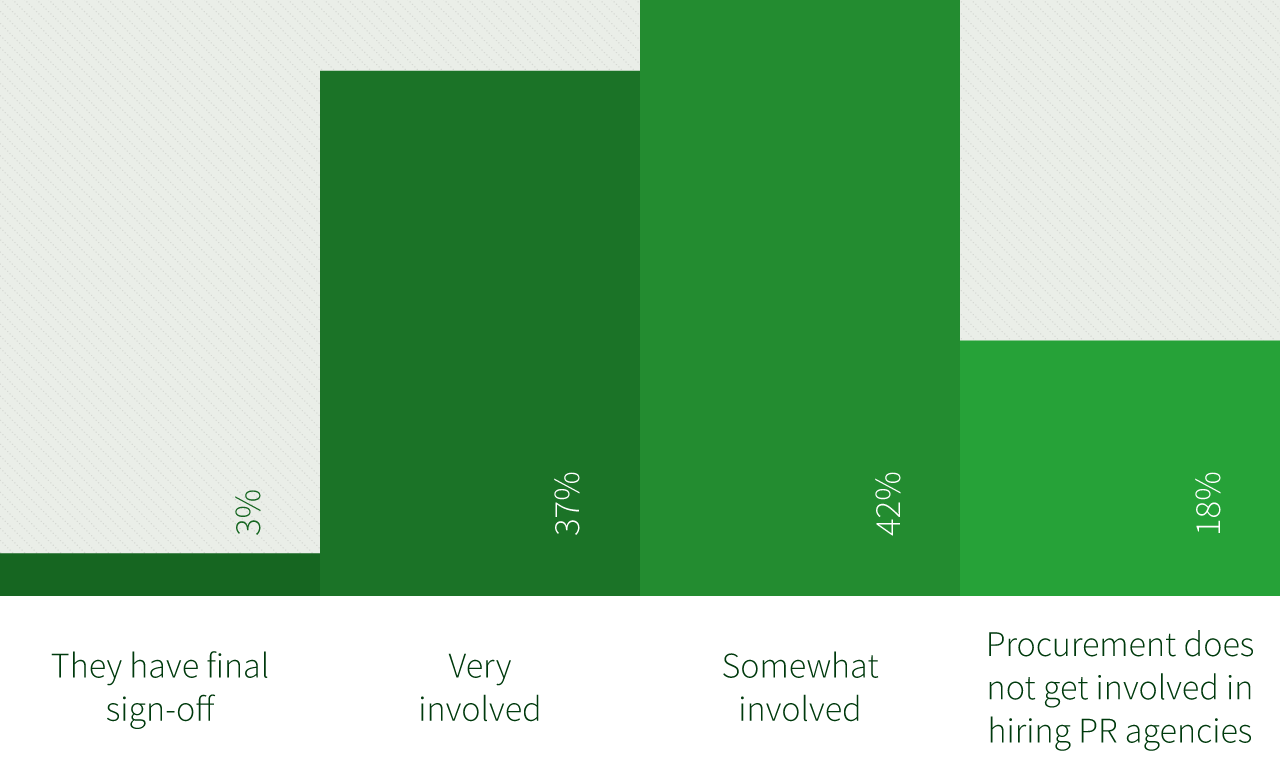
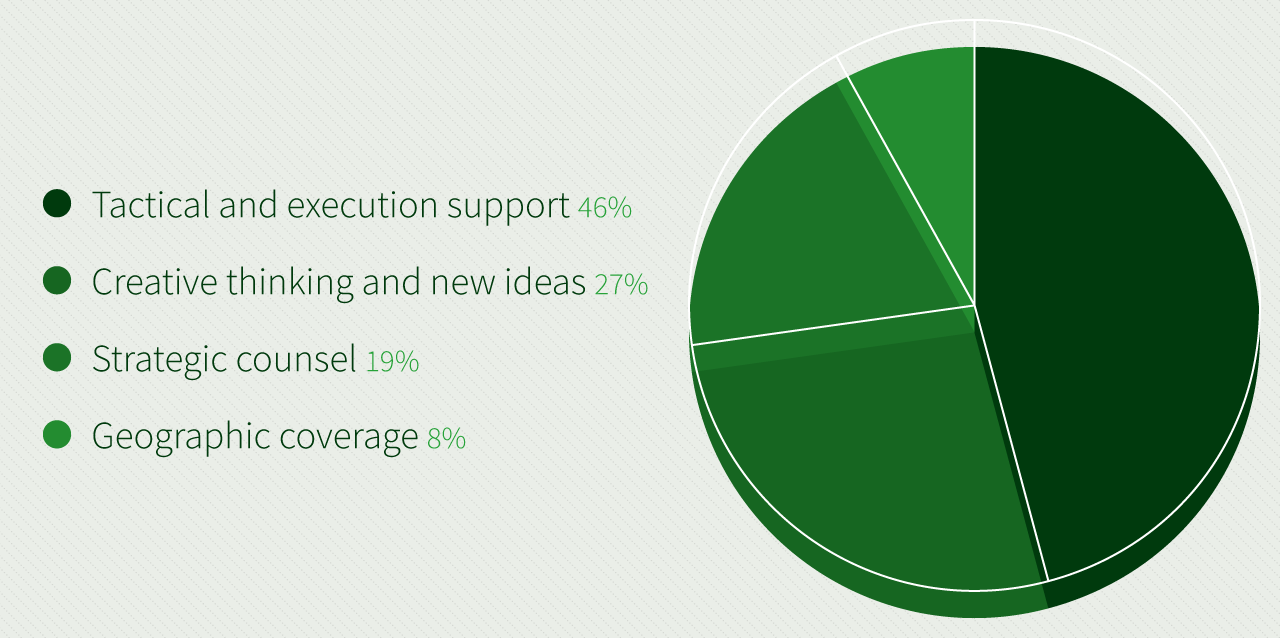 There’s been a big drop in the number of influencers preferring to hire an agency via an invitation-only pitch, down from 63% last year and 55% in 2016 to 34%. A similar number prefer to run a traditional RFI/RFP process, up from 27% last year. The number of respondents who prefer to hire an agency they have previously worked with is stable at just 3% - though hugely down from 17% in 2016. Those opting to use a referral network is up dramatically from 7% to 29%.
There’s been a big drop in the number of influencers preferring to hire an agency via an invitation-only pitch, down from 63% last year and 55% in 2016 to 34%. A similar number prefer to run a traditional RFI/RFP process, up from 27% last year. The number of respondents who prefer to hire an agency they have previously worked with is stable at just 3% - though hugely down from 17% in 2016. Those opting to use a referral network is up dramatically from 7% to 29%.
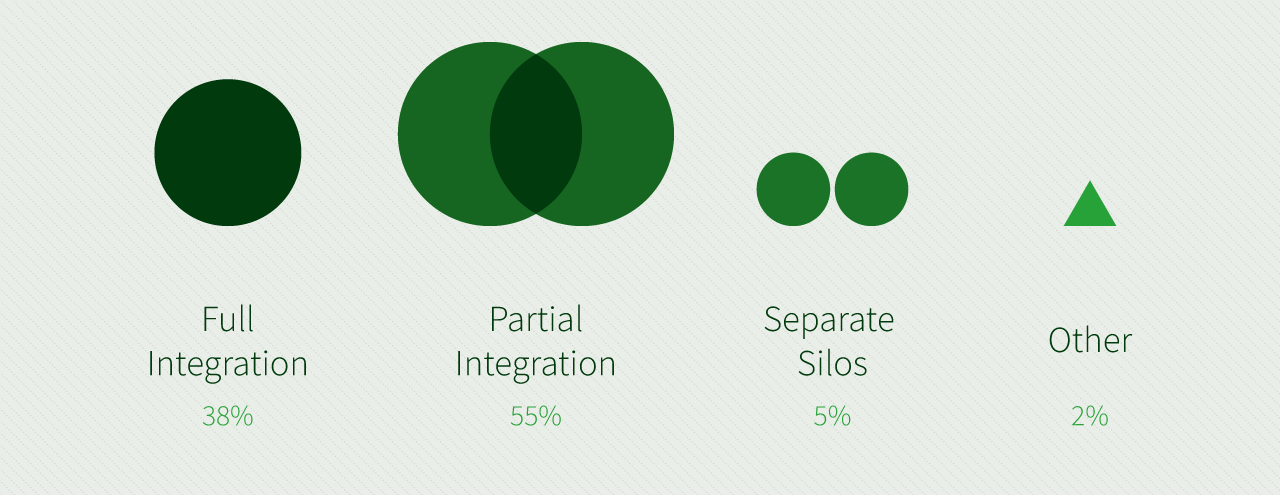 With integration the buzzword of the year, we added another set of questions in our influencer survey around the extent to which marketing and communications functions in their business are now integrated, and their expectations of their PR agencies in terms of offering an integrated service. Most – 55% – said there was partial integration of marketing and comms disciplines within their organisations, and 38% said there was full integrations. Only 5% said they still operated completely separate silos. It’s no surprise, then, that PR agencies are required to mirror this integration: over 57% said they now required full integration from their agencies. At the same time, more than 62% of clients are still expecting their PR agencies to be specialists in that discipline.
With integration the buzzword of the year, we added another set of questions in our influencer survey around the extent to which marketing and communications functions in their business are now integrated, and their expectations of their PR agencies in terms of offering an integrated service. Most – 55% – said there was partial integration of marketing and comms disciplines within their organisations, and 38% said there was full integrations. Only 5% said they still operated completely separate silos. It’s no surprise, then, that PR agencies are required to mirror this integration: over 57% said they now required full integration from their agencies. At the same time, more than 62% of clients are still expecting their PR agencies to be specialists in that discipline.
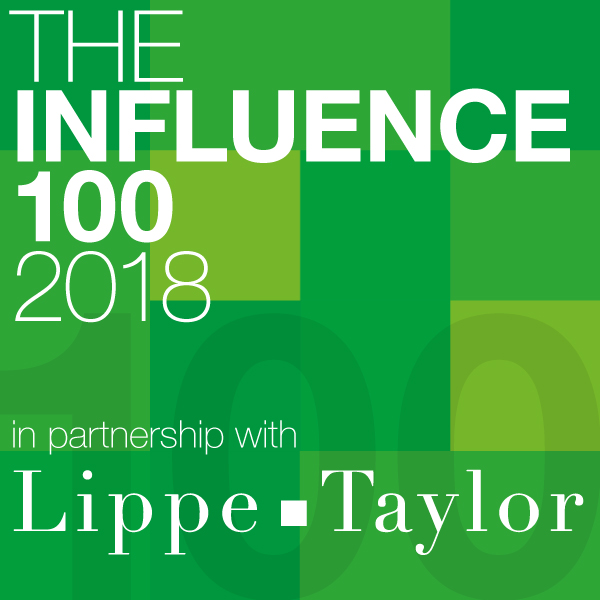

Intelligence and insight from across the PR world.
About PRovoke Media Contact Us Privacy & Cookie PolicyWe feel that the views of the reader are as important as the views of the writer. Please contact us at [email protected]
Signup For Our Newsletter Media Kits/Editorial Calendar Jobs Postings A-Z News Sitemap© Holmes Report LLC 2024